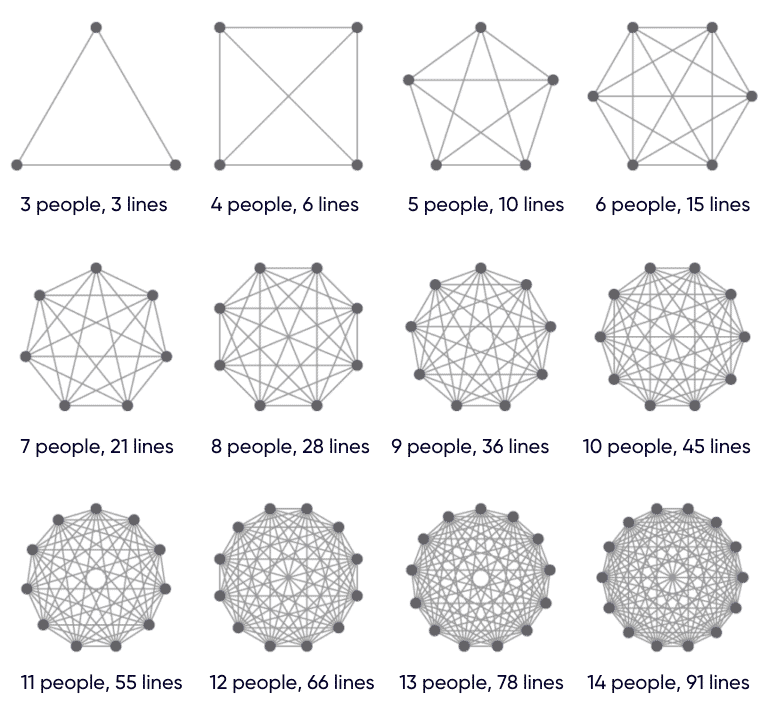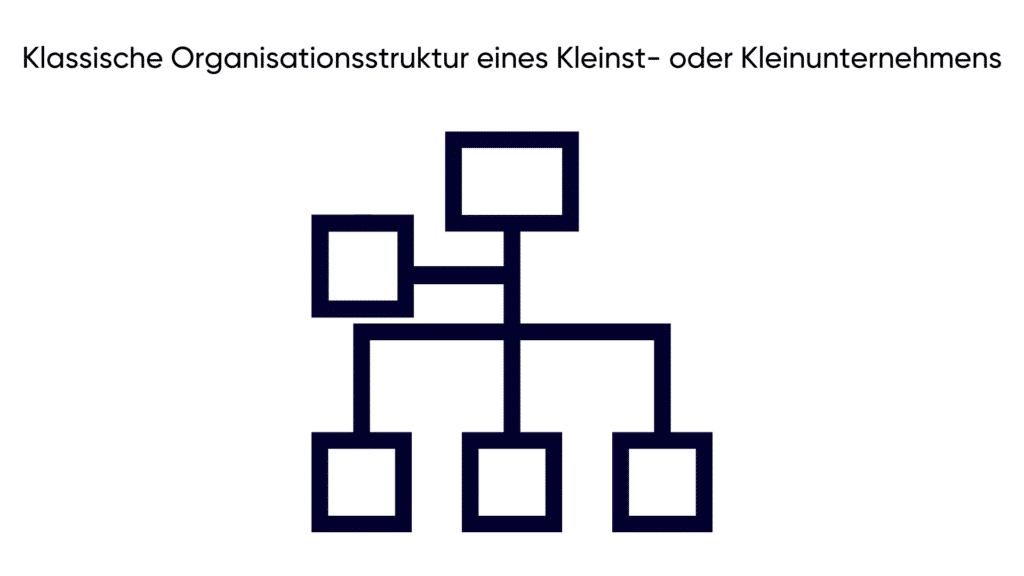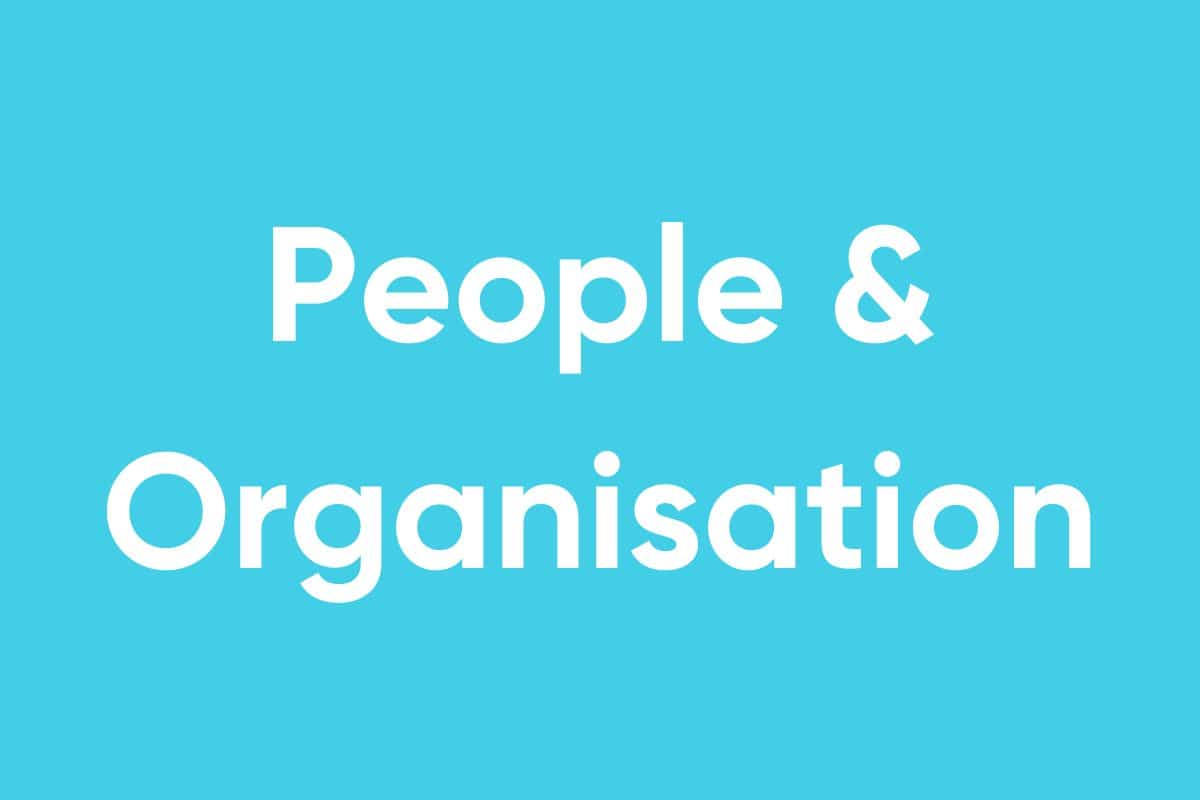Growth, at any stage, always entails change. Entrepreneurs must internalize this understanding when it comes to successfully scaling their own company. But what does it mean in practice when a startup evolves into a successful mid-sized enterprise? How does the company structure change, and what about the organization? What principles apply to different team sizes? A guide for the journey from startup to mid-sized enterprise.
Clear definitions of SMEs in theory
The Statistical Federal Office defines small and medium-sized enterprises, known as SMEs, based on turnover and employment sizes.

Source: https://www.destatis.de/DE/Themen/Branchen-Unternehmen/Unternehmen/Kleine-Unternehmen-Mittlere-Unternehmen/Glossar/kmu.html
The theory regarding SMEs is thus clearly defined. It becomes significantly more challenging for entrepreneurs when these numbers on paper translate into actual employees who need to be continuously guided and trained in line with the company’s objectives. Depending on the size of the workforce, entrepreneurs are faced with different challenges.
It’s not uncommon for a company to grow so rapidly that some (important) growth phases are skipped due to time constraints. In such cases, founders may have enough capacity to drive growth, but what good is it if the company’s goals are no longer clear to anyone, and teams are not collaborating efficiently due to a lack of organizational structure? What can the founder do to overcome these challenges?
The company is growing – and now?
Most of the time, after the startup phase, founders are faced with the challenge of finding and hiring talent. Once this step has been successfully accomplished, something that entrepreneurs have rarely thought about before now becomes crucial: the daily organization of an efficiently functioning business. This includes not only the daily operations but also the provision of a suitable office and equipping employees with laptops. It’s more about structuring the work processes, facilitating communication among employees, and potentially establishing new hierarchical levels, even in the early stages of the business.

Source: https://sp-ao.shortpixel.ai/client/q_lossy,ret_img,w_768/https://getlighthouse.com/blog/wp-content/uploads/2020/10/lines-of-communication-stackoverflow-1024×953-1-768×715.png
What ends up looking like a beautiful mandala illustrates the complexity of communication channels among individual employees within a company, even with just a team of 14 people. This complexity needs to be managed with a carefully planned organizational structure.
#0 Employees – The Founder as Allrounder
The goal is set, the business account is set up, the business is registered, and the venture begins. The start of a business is undeniably exciting, demanding, and sometimes lonely. The founder is usually the only employee and acts as a jack-of-all-trades. Work is done at all hours of the day and night, the office changes from the living room to the kitchen, and maybe even the balcony. Founders become multitasking heroes: marketing, customer contact, finance – all in one hand. But then comes the point where founders hire additional talent to help the company grow.
#10 Employees – time for delegation
A major milestone for all entrepreneurs: it reaches double digits. Having 10 employees is an exciting company size that is enjoyable. Everyone fits around the conference table together (barely). Everyone knows the company’s goals because many have been there since the beginning. Founders now function as CEOs.
The magic word now is delegation. By delegating tasks, CEOs have more time to focus on the company’s core business without losing sight of it. It’s not uncommon for the CEO to assign specific mini-departments, such as human resources, to certain employees at this stage of the company, or to create corresponding positions. Another management position, such as a CFO, can handle the company’s financial aspects. Hierarchy levels are generally still flat, and at this relatively young stage of the business, the management team and the team often have a friendly relationship with each other.

#25 Employees – the Breaking Point
The previously loosely assigned mini-departments have now become fixed teams with defined roles and responsibilities, reporting to the management. This has led to the formation of new corporate hierarchies. Established communication tools like Slack for internal communication become indispensable. Without such a tool, it becomes challenging to keep track of what’s happening within the company. While the CEO in the previous stage knew most employees personally, managing relationships with 25 employees is significantly more challenging. This is where regular, scheduled one-on-one meetings become essential. These meetings give employees the opportunity to be heard and taken seriously, while the CEO can provide feedback simultaneously.
A regular management or leader-level meeting and team meetings are a fixed part of the week. Team-building events like shared dinners or short trips not only strengthen the teams but also provide an excellent opportunity to reinforce and solidify the company’s values and goals.
#50 employees – Welcome to the middle class!
According to the definition, the former startup has now become a medium-sized company with 50 employees. The company may have grown up to this point, but at this stage, a well-structured organization has been implemented in practice, not just in theory.
The second-line management, including talents filling the positions of CFO, CTO, CMO, and Director HR, is an integral part of the company’s organization. These experts oversee their respective areas of the company, while the CEO focuses primarily on the company’s strategy and less on its day-to-day operations. Additional departments are added, which are further divided into smaller teams.
Even though the company has now reached a considerable size, one-on-ones with employees are not neglected. They are typically no longer conducted directly with the CEO but with the respective leaders or managers. Internal company communication plays an even greater role from now on, in every conceivable form: the mentioned one-on-ones, meetings, establishing an intranet, workshops, setting up wikis, newsletters.
Even with 60 or 100 employees, the framework of this organizational structure remains in place. It is simply adjusted to the respective size, whether through additional second-line management positions, departments, or new teams. Even in the three-digit range, employees continue to be what they were in a team of 4: the backbone and foundation of the entire organization.












